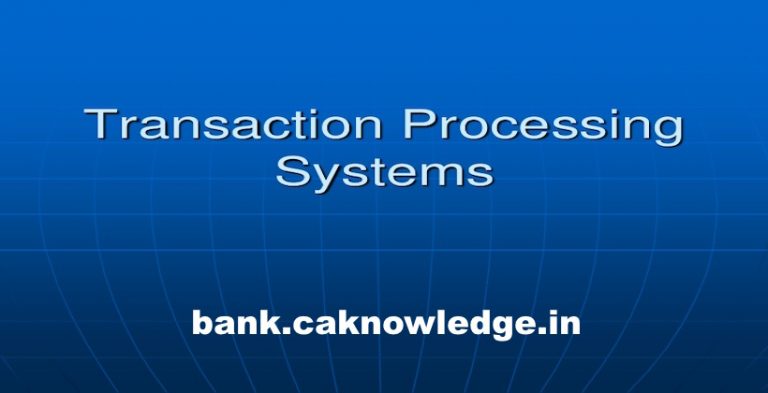Transaction Processing System (TPS) – All the organizations in the world need to maintain records of the transactions entered into by it. An organization while running business has to undergo certain activities such as purchases, sales, receipts, payments, etc. All these activities are termed as transactions. Managing such transactions is termed as Transaction processing and the system used for processing of such transaction is termed as Transaction Processing System.
Transaction Processing System (TPS)
What is Transaction Processing System?
TPS is an information system that is used to process day to day transactions such as purchases, expenses, sales, receipts, payments, etc. TPS may provide us with meaningful routine reports such as profit & loss a/c and balance sheet, etc.
TPS basically manipulates data from business transactions. The users of TPS generally are not in a position to make typical management decisions. A TPS captures data, processes it and makes available such data in the form of reports to be utilized by the management.TPS is the oldest known information system used for business applications. However, TPS has progressed a lot since then, majorly due to availability of the Internet.
A TPS may be defined as an Information system that collects, stores, retrieves day to day transactions of the organization. TPS generally may be used in Railway Reservation Systems, Accounting Systems, Banking Systems, etc. Global economy is a major reason for the advancement of TPS.
Qualifiers For TPS
- Atomicity: A transaction must be completed in full and not in parts. A transaction must take place in entirety.
- Consistency: Data integrity or consistency should be well maintained. Cash should not go negative in the books, this is a requirement of the management so the system should be such that it does not accepts any cash payment related transaction when the cash is not available.
- Isolation: The transactions must be executed simultaneously but individual privacy should not be disturbed. Debit and credit should occur simultaneously without affecting each other.
- Durability: Transaction which is not confirmed should not be recorded and transactions which are completed should be edited only with prior approval.
Attributes of TPS:
- ACCESS CONTROL: TPS generally has features by which only authorized users are allowed to access the system. Thus, any unauthorized user cannot make changes to the system or access the system. This access control feature leads to security of the TPS.
- EQUIVALENCE: TPS provide similar format to its users for data entry thus users efficiency gets increased and the overall system effectiveness is also improved.
- HIGH VOLOUME RAPID PROCESSING: A pre requirement is that TPS must be able to process huge transactions within very less time and that too efficiently. We know the number of transactions occurring in railway system and the quickness required. A TPS must be such that it may handle large number of transactions without any failure.
- RELIABLITY: A TPS should be such that it is available day and night.TPS should be such that we can believe it is secured and error free.
Components of TPS:
- Inputs: Source documents such as Customer orders, invoices, purchase orders, etc. serves as Inputs to the TPS system.
- Processing: Once the inputs are provided, they are further processed to get an output.
- Storage: Ledgers serves as a source of storage.
- Output: Any document generated is termed as output.
These were the fundamentals behind the Transaction Processing System. It is a very helpful, reliable & secured system of processing transactions at an ease.
Recommended Articles
